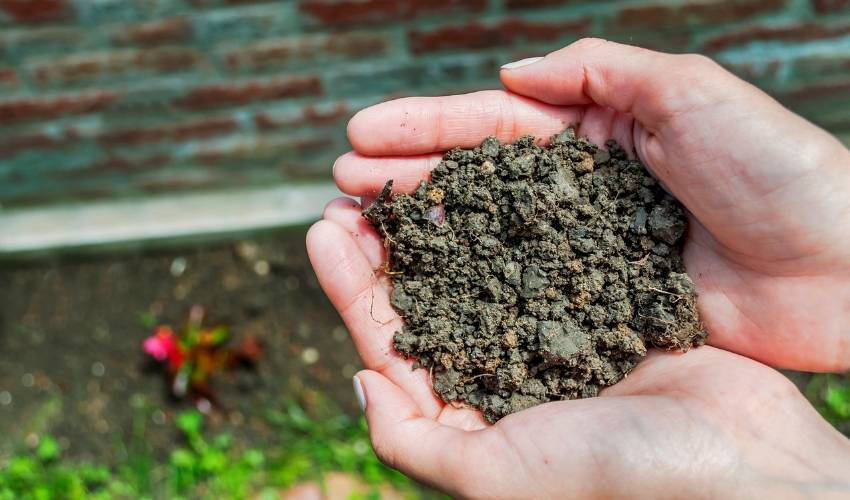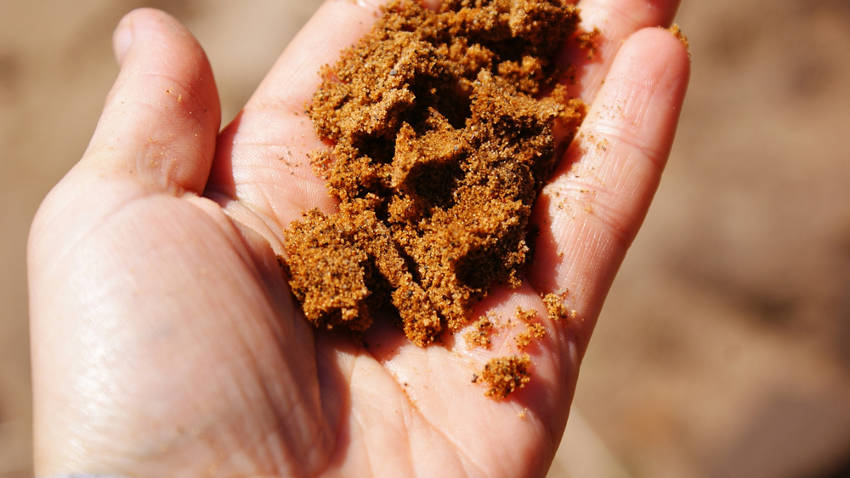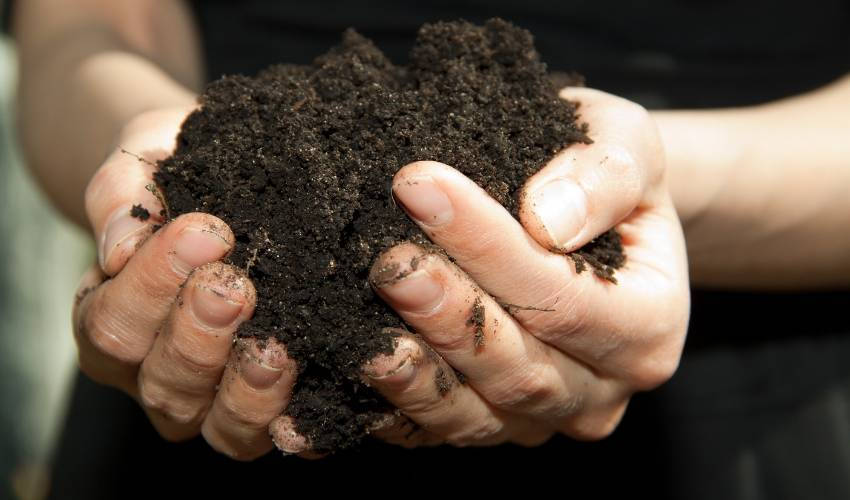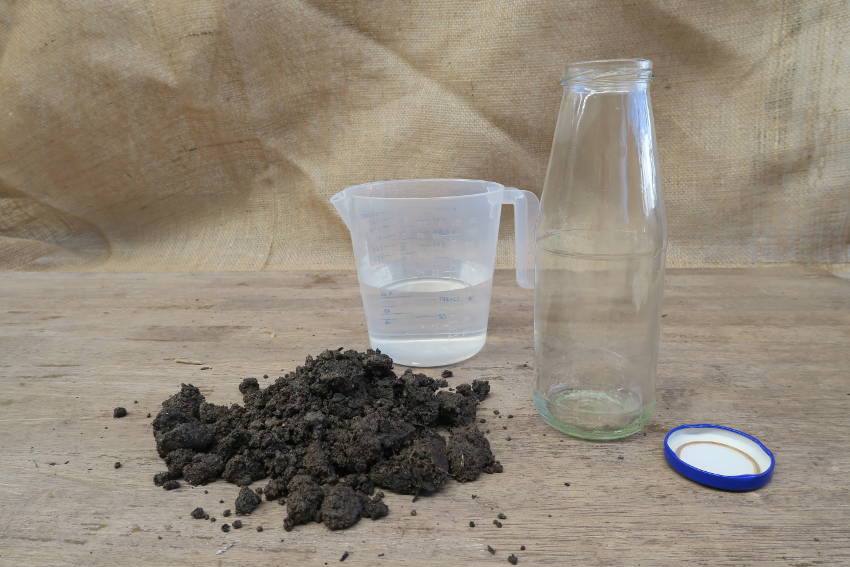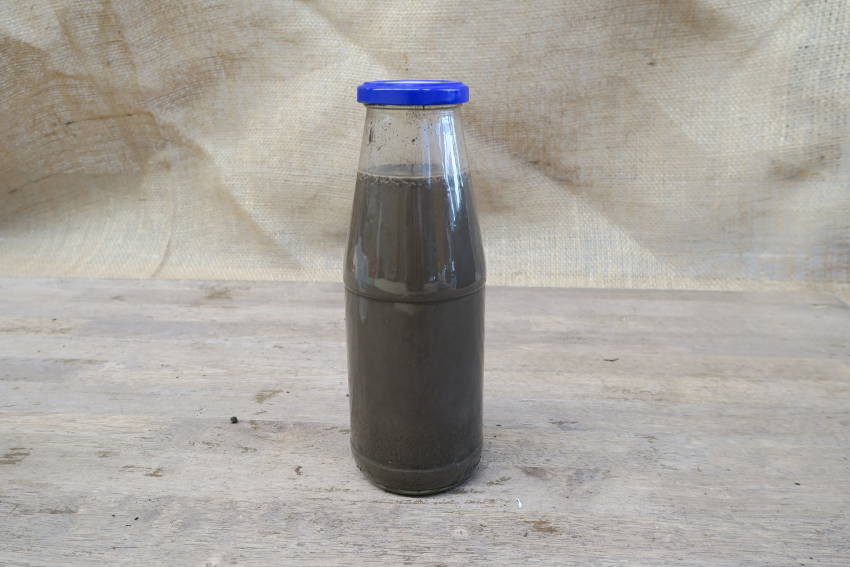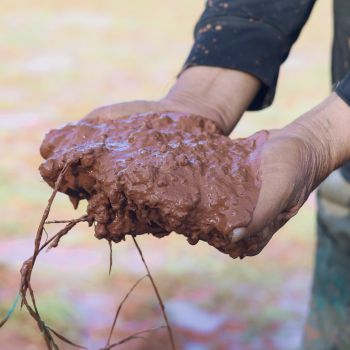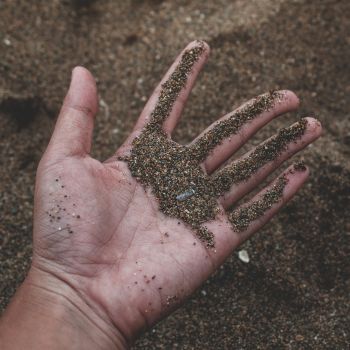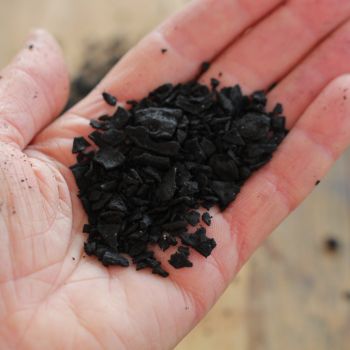Whatever type of gardening you do, soil lies at the heart of your success. It's the soil that delivers nutrients and moisture to your plants, and how efficiently it does this is hugely dependent on what type of soil it is.
What is Soil Type?
Soil is a complex mixture of minerals, decomposing organic materials, and living microorganisms. However, the basic bulk of it is formed from the weathered, broken-down rocks of your area.
Depending on local geology and climate, soil consists of a mix of rock particles in three general size ranges: sandy soil with large particles; silt soil with medium particles; and clay soil with fine particles.
The ideal gardening soil is known as loam, which is a roughly equal combination of clay, silt, and sand. Loam retains moisture without becoming waterlogged, holds on to nutrients well, and is easy to work with.
Unfortunately, few gardens are blessed with this growing medium without some soil improvement assistance from the gardener.
Testing Your Soil Type
Unless you're lucky enough to have a top-quality loam in your garden, it's a good idea to find out which soil type you have so that you can adjust your gardening to take it into account.
At the extremes, it's fairly easy to detect your soil type. Clay soil will form a sticky ball when moistened and squeezed between your fingers. Sandy soil stays loose and grainy no matter how wet it is.
Of course, most soil falls somewhere in between, and a simple home test will tell you exactly where it lies on the spectrum. Here's how to do it.
- Take soil samples from different parts of the bed you're testing, and mix them together.
- Fill a glass jar to halfway with the soil mix, and top up with plain water.
- Put a lid on the jar, and shake well until the soil is fully dissolved.
- Leave the jar undisturbed overnight to let the contents settle.
As the soil separates out of the water, you should see three distinct layers begin to form. The heavier grains of sand will sink to the bottom of the jar. The light clay will remain at the top, and the silt will sit in between.
Measuring the relative heights of these three layers will let you estimate where your soil lies in the sand-to-clay range. If you have three roughly equal layers, then congratulations: you have a loam.
However, if your soil is dominated by sand or clay, all's not lost. With a little work you can start to move your soil nearer toward that ideal loam combination.
Below: Soil test, jar method: Add soil and water to jar, shake well and leave to settle.
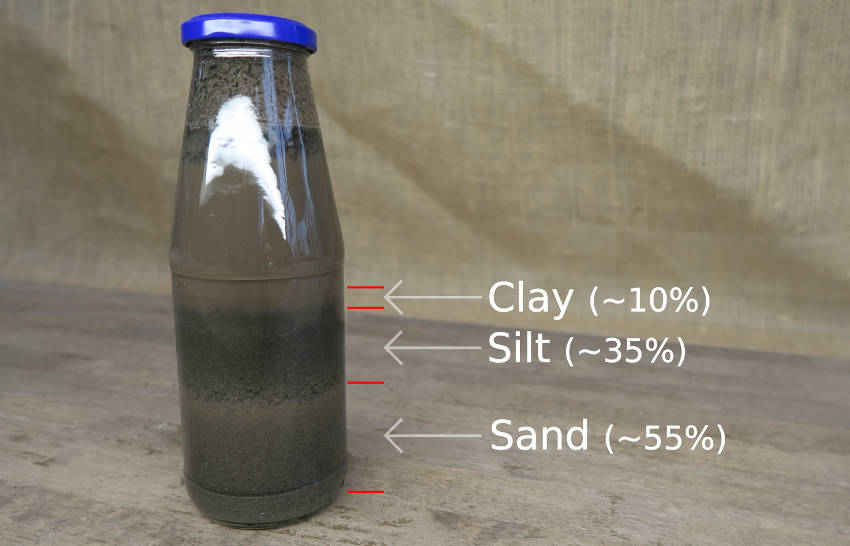
If You Have a Clay Soil
A clay soil is defined as one with 50 percent or more clay content. While this isn't an ideal soil formulation, it does have some advantages.
Firstly, a heavy clay soil is resistant to erosion and provides a good base for anchoring tall plants. It's also less affected by air temperature, meaning it offers plant roots some protection against seasonal extremes.
Perhaps most importantly, the tiny particles of a clay soil are good at holding on to nutrients, keeping them available for your plants' roots. This means clay soils are usually extremely fertile.
What's more, clay soil retains water easily, helping to compensate for dry spells and reducing the need for regular watering.
However, this water retention can cause problems. Clay soil is easy to waterlog, and very slow to dry out after rain. And as wet clay soil becomes sticky under pressure, it can quickly become compacted when dug over or stepped on.
Even worse, once compacted clay soil finally dries, it sets into a concrete-like texture. This is very difficult to work with, almost impossible for plants to break through, and liable to surface flooding during the next rainfall.
Improving Clay Soils
Although clay soil offers several benefits, the further away from loam it goes the worse the drawbacks become. For a quick fix, mix in coarse horticultural sand or gypsum to lighten the soil's texture and increase its drainage.
However, for large areas, this is sometimes unrealistic as it can take a lot of added material to make a significant difference. Also, working a clay soil hard enough to blend in the sand risks compacting the lower layers, making drainage even worse than before.
Instead, adding plenty of organic matter will redress the balance over time, while also feeding your soil and increasing microbial activity.
Any organic matter will help, such as leaf mould, compost, manure, seaweed, and so on. However, make sure it's already well-rotted to a fine texture, as decomposition in a clay soil can be a slow process.
The best way to incorporate organic matter into a clay soil is to take a leaf out of the 'no dig' movement's book, and apply a thick mulch as often as necessary. Worms, weather, and wildlife will do the work of mixing it into the soil without the risk of compaction.
It may take a few growing seasons for the full benefits to be seen, but it's a more natural process that will leave your soil in better long-term health.
If You Have a Sandy Soil
Soil with a sand content of 50 percent or more is even less well suited to gardening than a heavy clay soil. The large, heavy particles leave plenty of space between them for water to drain through almost as fast as it's added.
While this can be helpful in areas of high rainfall, it means the soil's nutrients are washed out before plants can make full use of them. This process also makes the soil increasingly acidic, as watering leeches out alkaline minerals like calcium and potassium, while tending to leave acidic carbon behind.
But if water is in short supply, sandy soil has an even more serious problem. When fully dried out, it becomes almost water repellent, and it's very hard to rehydrate it again. This means you need to be extremely attentive to your soil's moisture levels, as even a few days' unexpected dryness can spell disaster.
On the plus side, sandy soil warms up quickly in spring, giving the growing season an early start. It's also easier to work with, and its fine texture means root vegetables grow more easily with a better shape.
But overall, the downsides of a strongly sandy soil mean improvement is advisable for any gardener who wants to make life easier for themselves.
How to Improve Sandy Soil
As with clay, sandy soils benefit enormously from the addition of well-rotted organic material. It enhances water retention and replenishes vital nutrients, and compared to clay soils it's much easier to dig in with no danger of compaction.
However, a more straightforward approach is to apply rotted compost as a mulch, or add it to the planting hole whenever you're planting something new. Over time, the soil will find a more loam-like balance.
Bear in mind that sandy soil is likely to be fairly acidic already, and adding more organic matter will only lower the pH further. To counter this, consider adding a little lime at the same time to balance the chemistry.
Time spent working on your soil might not give the speedily visible rewards of a dazzling flower display or a flourishing veggie bed. But as soil is the foundation of all your gardening success, the importance of improving it can't be overstated.
Shifting your soil type closer to a perfect loam will pay dividends for years to come, even if the gratification is a little delayed.
